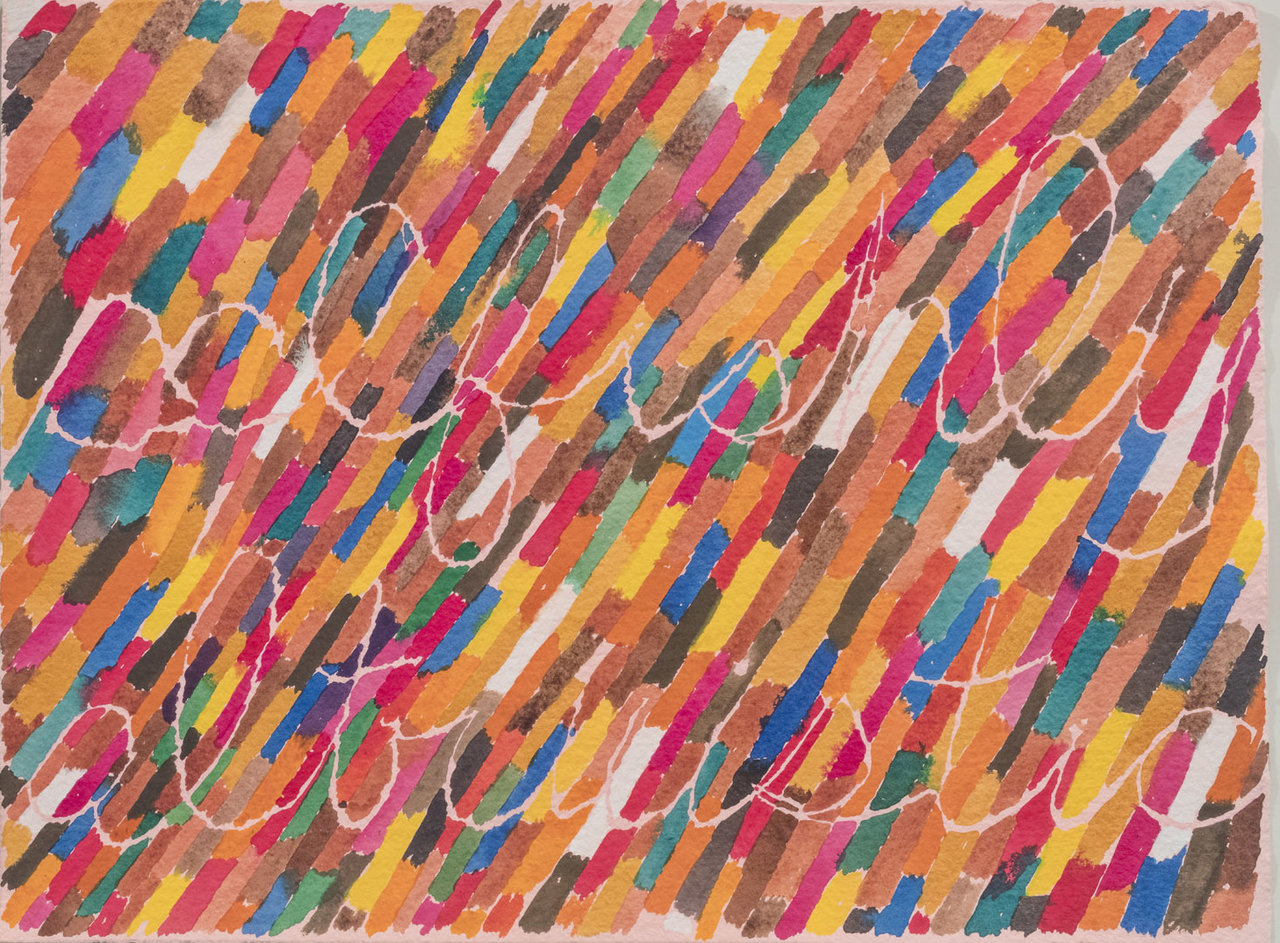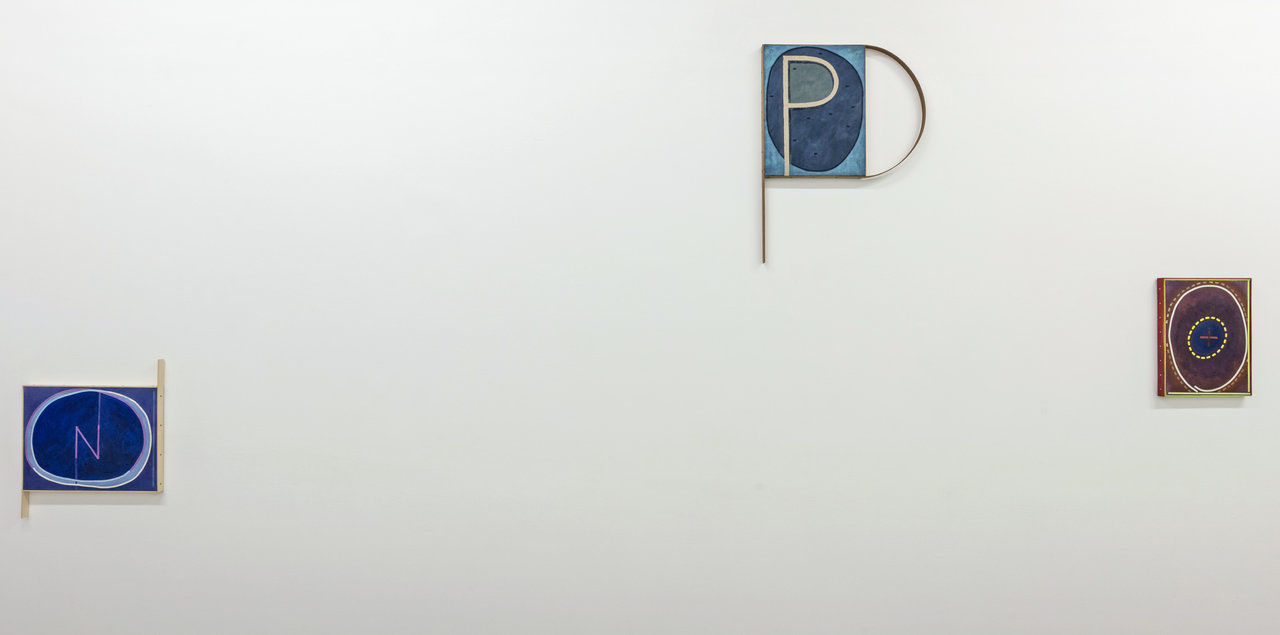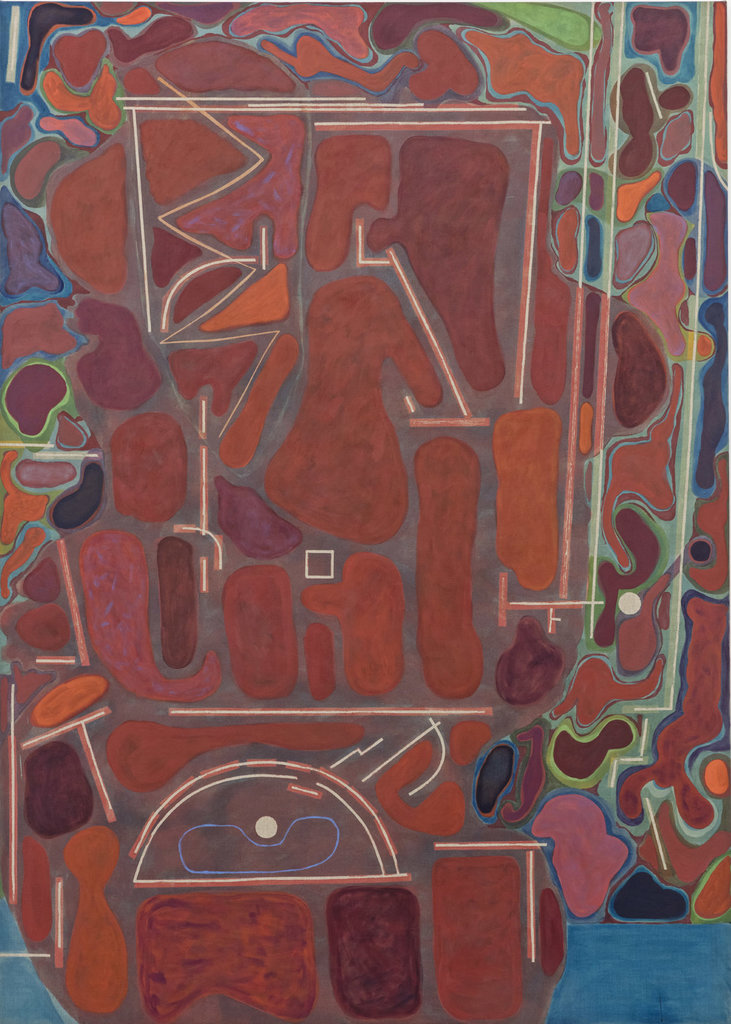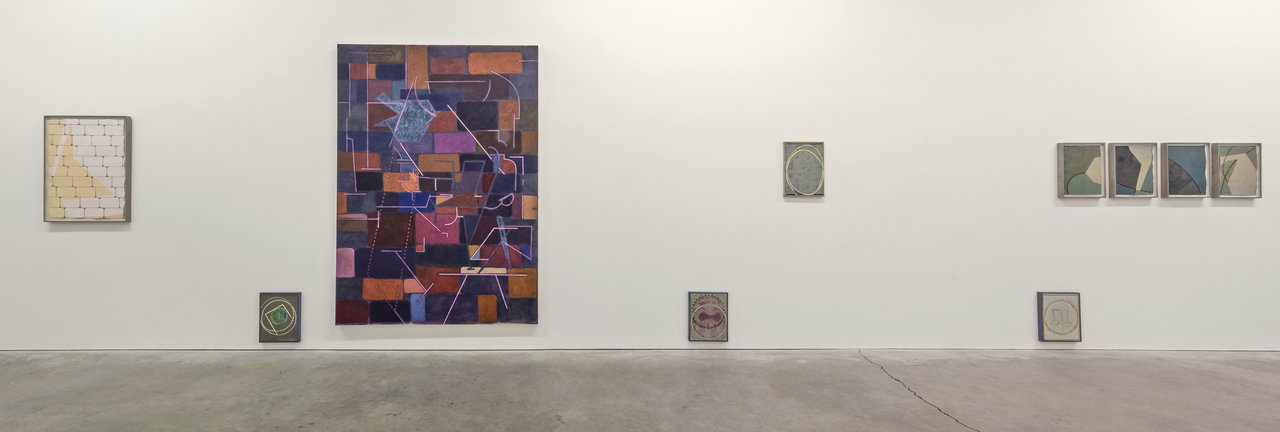Years ago, feeling good, the artist stumbled upon an old book at a Goodwill store: The Personal Atmosphere, by Frank Channing Haddock PhD. He bought it. Years later, feeling bad, he opened the book and used its questionable power to make this show.
This, however, is not the first show Howlett built based on literature. His 2010 exhibition, also in Susan Hobbs Gallery, borrowed a title from an essay by French philosopher Henri Bergson, The possible and the real. Through his work, Howlett examined concepts related to Bergson’s interpretations of the “possible”, the “real” and the possible exchanges between pasts, presents and futures.
 Patrick Howlett, The Personal Atmosphere, installation view, 2016. Photo: Toni Hafkenscheid
Patrick Howlett, The Personal Atmosphere, installation view, 2016. Photo: Toni Hafkenscheid
The Personal Atmosphere: Ten Studies in Poise and Power by Frank Channing Haddock (1908. J.F. Tapley CC, New York) is a self-help book of that time, that focuses on positive thinking and the mood changes caused by electro-magnetic vibrations.
In psychology Personal Atmosphere, some might call it aura, is the energy a person exudes and the way people feel when they come into his/her orbit. It is unique for everyone and has a dominant theme and emotional tone, and it goes through stages. During depression, the personal atmosphere is under construction. The individual is in the process of re-evaluating life to allow a deeper expression of peculiarities and eccentricities. This is a procedure that is filled with tension that both the person and others around them will feel – and it may be inspiring. A perfect state of mind for starting a new painting series.
 Patrick Howlett, New Thoughts: Selfishly Altruistic, 2016, watercolour and gouache on paper, 28 x 37.5 cm. Photo: Toni Hafkenscheid
Patrick Howlett, New Thoughts: Selfishly Altruistic, 2016, watercolour and gouache on paper, 28 x 37.5 cm. Photo: Toni Hafkenscheid
Howlett posted a page full of quotations from Haddock’s book on Susan Hobbs website and I foolishly attempted to pair them up with his paintings – which is, of course, impossible. It wasn’t the power of the words but the power of the vision that the artist created from them that can give us some guidance. I decided to start with this one: “Begin by thinking beauty and good cheer (70).”
I love to read and I love the alphabet. Growing up in Europe where education means focusing on letters at an early age, I have always been mesmerized by them. On entering the Susan Hobbs Gallery, and seeing half the walls covered by alphabet letters, I was immediately enveloped in a friendly atmosphere. The memory of picturesque codex letters that tell an entire story came up, followed by the more rational Guttenberg ABC and the opportunity that printing bought to us readers. Howlett’s letters don’t follow any traditions. They come from the artist’s personal history and imagery. He is the only one who knows their hidden meaning. A large, three-dimensional P captures a smaller P. The latter is comfortable sitting in a dark blue oval (an O maybe) surrounded by a lighter blue rectangular shape (Positive Space). It is very playful. I call it POP, pop, pop, pop – a movement, a sound. A NO, an N surrounded by an O (Negative Space) and O with a + sign in the middle (Positron) that I will also name Opus – there is an endless opportunity for guessing games.
 Patrick Howlett, The Personal Atmosphere, installation view, 2016. Photo: Toni Hafkenscheid
Patrick Howlett, The Personal Atmosphere, installation view, 2016. Photo: Toni Hafkenscheid
A big O is the central element of Outlet or maybe it’s a circle or an open mouth. The motif and the composition bring Philip Guston’s paintings to mind. The blue shape in the centre might be a protruded tongue, like the Rolling Stones emblem cooled from its burning red to calm blue, or a little bag for treasures surrounded by stitches that form a string. Dotted lines and cut-out shapes create the compositions of the effort becomes confusing – showing the steps of creating the pieces. “The painting is teeming with clues and with traces that the artist has left here like signposts” (Françoise Barbe-Gall. How to Look at a Painting, London, Frances Lincoln Limited, 2010, p. 195) quotes Alex Bowron in his essay Frame Work 12/16, that accompanies Howlett’s show. Indeed, there are many possible interpretations for Howlett’s work, like for all abstract compositions.
 Patrick Howlett, Outlet, 2016, oil and distemper on linen on panel, painted frame, 37.5 x 30 cm. Photo: Toni Hafkenscheid
Patrick Howlett, Outlet, 2016, oil and distemper on linen on panel, painted frame, 37.5 x 30 cm. Photo: Toni Hafkenscheid
 Patrick Howlett, the effort becomes confusing, 2016, gouache and watercolour on paper, in 4 units, 42.5 x 192 cm. Photo: Toni Hafkenscheid
Patrick Howlett, the effort becomes confusing, 2016, gouache and watercolour on paper, in 4 units, 42.5 x 192 cm. Photo: Toni Hafkenscheid
Howlett’s paintings are layered with intellectual meaning. His symbols are sophisticated. Not just that he is well versed in literature and philosophy, familiar with modern art and the work of his contemporaries, and a music lover, but also that he is a critical thinker on his own. His compositions are unique and a product of a long meditation as well as compositional experimentation. He uses everything a contemporary artist can – from art history to the never-ending richness of internet images – to create his own work. “I make paintings that I hope are novel in some way. I like the transformative nature of making a painting, and I am conscious of that idea when creating an image.” – said Howlett in an interview (blogspot March 22, 2011).
 Patrick Howlett, soft, flabby and factice, 2016, distemper and oil on linen 213.5 x 152.5 cm. Photo: Toni Hafkenscheid
Patrick Howlett, soft, flabby and factice, 2016, distemper and oil on linen 213.5 x 152.5 cm. Photo: Toni Hafkenscheid
In one of the largest painting of the exhibition, soft, flabby and factice, we can find all the painterly elements of the show concentrated into one. Like Paul Klee, Howlett brings together many elements into one composition. It is hard to know what it is about; the motifs are soft and hard, geometric and organic, seemingly kept together by factice, an oil used as a processing aid in rubber. From a distance the geometrical shapes stand out but looked at more closely the organic forms become stronger – creating harmony. The paint layers of the organic shapes give the illusion of transparencies while the straight and curved geometric lines are almost neon-like. The painting has a rich palette from the cold blues of water, surrounded by thin green lines of vegetation to the reds of sunsets and the deep browns of earth. The whole composition reminds us of aerial photographs when the plane is still close to the ground so the landmarks are still outlined but slowly disperse into shapes only. The overlapping geometrical structure must be man-made but entirely environmentally friendly as they follow the forms of the land. There is a lot of movement and an almost musical rhythm in this composition.
 Patrick Howlett, The Personal Atmosphere, installation view, 2016. Photo: Toni Hafkenscheid
Patrick Howlett, The Personal Atmosphere, installation view, 2016. Photo: Toni Hafkenscheid
The installation of the exhibition is structured and site-specific but still feels intuitive. Visitors are compelled to look up and down, their eyes constantly shifting, because the works are hung at various heights and at uneven distances – emphasizing the show’s nonlinear nature.
Let me finish with a Haddock quote, again from Howlett’s picks: “It is as if we had the more than Gorgon power of transmuting every object around us into forms beautiful or hideous, and of sending the transmuting process forward through time and eternity (53-54)” – and this is exactly what these paintings do.
Emese Krunák-Hajagos
*Exhibition information: December 1, 2016 – January 28, 2017, Susan Hobbs Gallery, 137 Tecumseth Street, Toronto. Gallery hours: Wed – Sat, 11 am – 5 pm.
